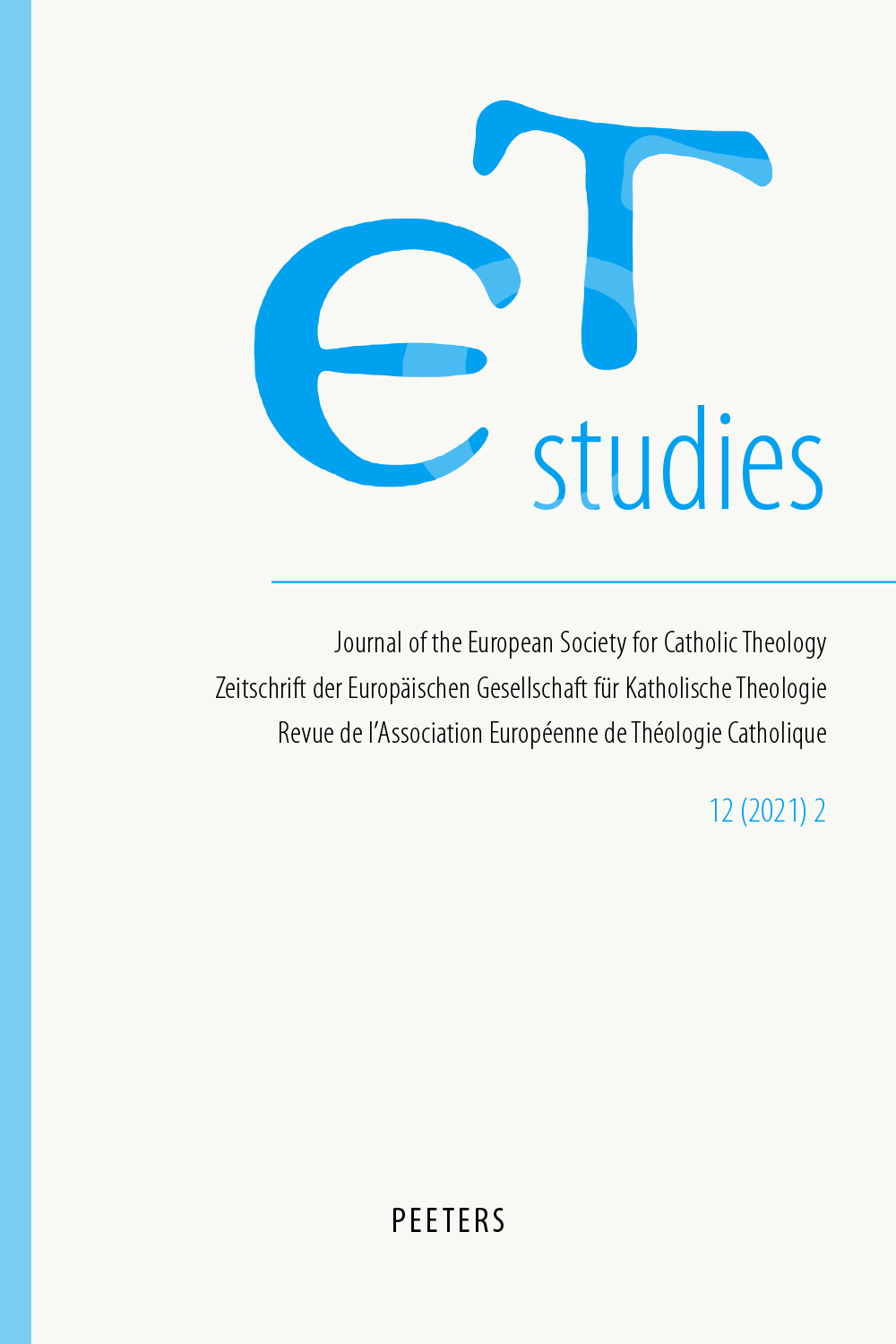 previous article in this issue previous article in this issue | next article in this issue  |

|
Document Details : Title: Wendezeit für die römische Kirche Subtitle: Der schwierige Weg der Klerikerkirche zu einer Kirche des Gottesvolkes Author(s): WEISNER, Christian Journal: ET-Studies Volume: 9 Issue: 1 Date: 2018 Pages: 3-26 DOI: 10.2143/ETS.9.1.3281494 Abstract : Mit Jorge Mario Bergoglio wurde erstmals ein Kardinal zum Papst gewählt, der zwar nicht das Zweite Vatikanische Konzil in Rom miterlebt hatte, der aber von dem Kontinent kommt, auf dem die Visionen dieses Reformkonzils am konsequentesten umgesetzt worden sind. Jetzt besteht die vielleicht letzte Chance für lange Zeit, dass die durch das Konzil eingeleitete epochale Wende wieder aufgenommen werden kann. Mit den beiden Familiensynoden und dem nachsynodalen Schreiben 'Amoris laetitia' hat Papst Franziskus die dringend notwendige Fortentwicklung der katholischen Sexualethik, Pastoral und Familientheologie eingeleitet. Dieser grundlegende Transformationsprozess muss jetzt gegen alle Widerstände innerhalb und außerhalb des Vatikans theologisch weiter untermauert und kirchenrechtlich unumkehrbar gemacht werden. Dazu ist eine noch sehr viel stärkere Unterstützung durch alle reformbereiten Kardinäle und Bischöfe, Theologinnen und Theologen, aber auch durch das Kirchenvolk in aller Welt dringend notwendig. Aus Sicht der Reformbewegung Wir sind Kirche unternimmt der Autor den Versuch, eine Zwischenbilanz der vielschichtigen und höchst dynamischen innerkirchlichen Prozesse zu ziehen, die in weltpolitisch unruhigen Zeiten auch weit über den binnenkirchlichen Raum hinaus Wirkung zeigen. Es bleibt zu hoffen, dass es nach zwei restaurativen Pontifikaten jetzt gelingt, zum Reformkurs des Konzils zurückzufinden und die notwendigen Prozesse einzuleiten, damit die römisch-katholische Kirche eine neue und positivere Rolle in der sich rasch verändernden globalen Gemeinschaft der Menschheit finden kann. Jorge Mario Bergoglio was the first cardinal to be elected pope who had not been present at the Second Vatican Council in Rome, but he comes from a continent where the vision of this reforming Council has been implemented most consistently. Now is perhaps the last opportunity for a long time to take up again the epochal change that the Council introduced. With the two synods on the family and Amoris Laetitia, written after the synods, Pope Francis has initiated the much needed development in Catholic sexual ethics, pastoral theology and the theology of the family. This fundamental process of transformation must now be further strengthened theologically and made irreversible canonically against all opposition inside and outside the Vatican. Even stronger support is urgently needed from all reformist cardinals, bishops and theologians but also from people in the church throughout the world. From the perspective of the reform movement 'We Are Church', the author undertakes to take stock of the complex and highly dynamic processes within the church, which also appear in the troubled times of world politics far beyond the domestic space of the church. It remains to be hoped that it is now possible to find a way back to the course of reform of the Council, after the hiatus of two pontificates, and to take up the processes that are necessary for the Roman Catholic Church to find a new and more positive role in the rapidly changing global human community. Jorge Maria Bergoglio est le premier cardinal élu pape sans avoir été présent au concile Vatican II à Rome, mais il vient d’un continent où les orientations de ce concile réformateur ont été appliquées de façon particulièrement cohérente. C’est peut-être la dernière occasion avant longtemps de revenir au changement radical introduit par le Concile. Avec deux synodes sur la famille et, ensuite, Amoris Laetitia, le pape François a initié des développements tout à fait nécessaires dans l’éthique sexuelle catholique, la théologie pastorale et la théologie de la famille. Ce processus irréversible de transformation doit être maintenant renforcé théologiquement contre toute opposition interne et externe au Vatican. De manière urgente, il faut un soutien encore plus fort de la part, non seulement de tous les cardinaux réformistes, évêques et théologiens, mais aussi du peuple, dans l’Église à travers le monde. À partir de la perspective du mouvement réformiste «Nous sommes l’Église», l’auteur entreprend d’examiner les processus complexes et dynamiques en œuvre au sein de l’Église, ceux-là même qui se manifestent dans les temps troublés de la politique mondiale, bien au-delà de l’espace domestique de l’Église. Il reste à espérer qu’il est aujourd’hui possible, après la pause de deux pontificats, de trouver un chemin qui revienne au courant de réforme du Concile, et de mettre en œuvre les processus nécessaires pour que l’Église Catholique Romaine trouve une place nouvelle et positive dans l’évolution rapide de la communauté humaine mondiale. |
 |
